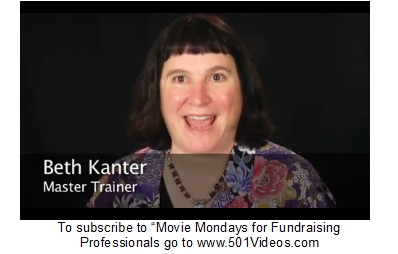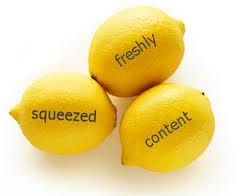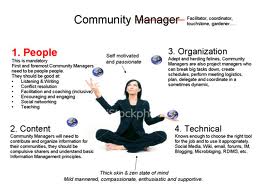 Welcome to O.D. Fridays at DonorDreams blog. Every Friday for the foreseeable future we will be looking at posts from John Greco’s blog called “johnponders ~ about life at work, mostly” and applying his organizational development messages to the non-profit community.
Welcome to O.D. Fridays at DonorDreams blog. Every Friday for the foreseeable future we will be looking at posts from John Greco’s blog called “johnponders ~ about life at work, mostly” and applying his organizational development messages to the non-profit community.
In a post titled “Making Breakfast,” John talks about how “culture eats strategy for breakfast“. He is referencing the importance of your organizational culture in everything you do. Of course, John says it in a way that only an organizational development professional can:
“The strategy required specific organizational knowledge, competencies, and behaviors to effectively execute and deliver the results as envisioned. And the organization didn’t have those. So with every presentation of the strategy, I was conflicted. Despite being consistently motivated by the possibility, I was increasingly concerned about the capability.”
In 2006, I made what I’ve now come to see as a brave decision when I left the front line and took a job as an internal consultant working for a national non-profit organization. For five years, I woke up every morning (usually in a hotel room somewhere on the road) and learned over and over again that culture eats strategy for breakfast.
To broadly and simply define my job . . . I was “Strategy Man”. My employer armed me with a 110 page manual focused on how to plan, organize, develop, implement and evaluate an annual campaign pledge drive. In addition to that manual, I was provided tons of tools, templates and samples that filled my consultants toolbox.
Some of you might be thinking “Easy, peasy, lemon squeezy.” But you would be way off target. Why? Because culture eats strategy for breakfast!
So, picture this . . .
I walk into an organization’s boardroom and sit down with a group of agency staff and volunteer board members. I pull out my PowerPoint presentation and lots of other shiny objects. Nothing up my sleeve … right? This fundraising thing is easy. Making an in-person, face-to-face fundraising solicitation is as easy as following these simple 12-steps.
When I was done selling the sizzle (e.g. teaching fundraising strategies), I was often met with resistance, bombarded with reasons why it wouldn’t work and told why they wouldn’t do it that way (e.g. organizational culture).
 Do you see it? Culture eats strategy!
Do you see it? Culture eats strategy!
If your non-profit organization has hired staff who don’t possess fundraising skill sets and don’t have a track record of success with resource development, then sitting through a meeting listening to “strategy” can be arduous and sometimes downright frightening. The typical response is “resistance,” which is what John means when he says culture eats strategy for breakfast.
The same explanation holds true for your organization’s board of directors.
If you are just recruiting warm bodies to fill chairs around your boardroom table without being intentional, then you probably have a boardroom of people who say things like: “Ask me to do anything, but please don’t ask me to fundraise.” (If I had a nickle for every time I heard that expression, I’d be retired and living on a tropical island sipping cool drinks in the shade.)
“If you want strategies to work, then you need to have the right people sitting around the table!”
Hire the right people. Recruit the right volunteers. Be intentional.
Last week, I was told by a board volunteer that he didn’t appreciate all of this talk about developing and following a board development process to increase the size of his board of directors. He kept arguing that we should throw process out the window and ask every existing board volunteer to ask a friend of theirs to join the board. Doing so would double the size of the board much quicker than how I was suggesting they do it.
 Hmmmm … looking back at that meeting, I think he was cooking up a hearty breakfast for me.
Hmmmm … looking back at that meeting, I think he was cooking up a hearty breakfast for me.
Some of you are probably wondering if your hiring and recruitment practices are intentional. If you answer ‘YES’ to many of the following questions, then you are probably being intentional:
- Do you have a board development committee focused on growing the board?
- Do you use tools that set expectations for prospective new board members (e.g. written volunteer position descriptions and commitment pledges)? Do you share these tools with prospects before asking them to join your board?
- Do you build prospect lists with the thought of filling gaps and acquiring volunteers with specific skill sets and experiences?
- Are you doing some informal background checking (e.g. asking friends and acquaintances about their current commitments, passions, past experiences, etc) before prioritizing who you plan on approaching first?
- Are you able to rattle off a list of characteristics and traits of a successful board volunteer? How about a successful fundraising volunteer?
If you want to succeed at whatever your organization is looking at doing, then first ask yourself if your agency “possesses the organizational knowledge, competencies, and behaviors to effectively execute and deliver the results as envisioned“. If not, then you need to work on organizational culture first before introducing strategies into the discussion.
How do you change organizational culture? Be intentional!
If you choose to plow forward with strategy with a blind eye turned towards culture, then you better be hungry for a large heaping breakfast plate. 😉
Have you ever had to change the people (e.g. staff, board, etc) who were sitting around your table? If so, how did you do it? What lessons did you learn? Do you have a very intentional board development process? Scroll down and use the comment box to share your thoughts and experiences.
Here’s to your health!
Erik Anderson
Founder & President, The Healthy Non-Profit LLC
www.thehealthynonprofit.com
erik@thehealthynonprofit.com
http://twitter.com/#!/eanderson847
http://www.facebook.com/eanderson847
http://www.linkedin.com/in/erikanderson847
 I am sicker than a dog and my mind is foggy, which is why I couldn’t post yesterday. However, the thought of not posting two days in a row is inconceivable to me. So, I find myself sitting here staring at a blank screen wondering what I should type. Rather than wax poetic about a current event or best practice, I’m going to share with you a question that another blogger touched upon a few months ago. Ever since reading it, I just haven’t been able to get it out of my head. Are you ready? Because here it is:
I am sicker than a dog and my mind is foggy, which is why I couldn’t post yesterday. However, the thought of not posting two days in a row is inconceivable to me. So, I find myself sitting here staring at a blank screen wondering what I should type. Rather than wax poetic about a current event or best practice, I’m going to share with you a question that another blogger touched upon a few months ago. Ever since reading it, I just haven’t been able to get it out of my head. Are you ready? Because here it is:
 As many of you know, I subscribe to many different blogs and eNewsletters, and I do a lot of reading. A few weeks ago, I received an eNewsletter called theInsider in my email inbox. It is a connection back to my Boys & Girls Club family. I’ve always loved this publication because there has never been a time after reading it that I didn’t have something to mentally chew on. The July 29th edition planted the following one very powerful thought in my head:
As many of you know, I subscribe to many different blogs and eNewsletters, and I do a lot of reading. A few weeks ago, I received an eNewsletter called theInsider in my email inbox. It is a connection back to my Boys & Girls Club family. I’ve always loved this publication because there has never been a time after reading it that I didn’t have something to mentally chew on. The July 29th edition planted the following one very powerful thought in my head: This is the short list I’ve managed to come up with:
This is the short list I’ve managed to come up with: Welcome to O.D. Fridays at DonorDreams blog. Every Friday for the foreseeable future we will be looking at posts from John Greco’s blog called “
Welcome to O.D. Fridays at DonorDreams blog. Every Friday for the foreseeable future we will be looking at posts from John Greco’s blog called “ Do you see it? Culture eats strategy!
Do you see it? Culture eats strategy! Hmmmm … looking back at that meeting, I think he was cooking up a hearty breakfast for me.
Hmmmm … looking back at that meeting, I think he was cooking up a hearty breakfast for me.
 I suspect many of you are nodding your heads right now. However, stop and think about your last week and where you spent your time. I suspect that many of you focused lots of time, energy and resources on the pebbles, sand and liquid in your non-profit jar such as:
I suspect many of you are nodding your heads right now. However, stop and think about your last week and where you spent your time. I suspect that many of you focused lots of time, energy and resources on the pebbles, sand and liquid in your non-profit jar such as:
 As you can probably imagine, I subscribe to a lot of things — everything from eNewsletters to blogs — and I do a lot of reading. It helps me be a better non-profit consultant, and equally important it helps me be a better thought-leader / blogger. This brings me to an article written by Cody Switzer in The Chronicle of Philanthropy titled “
As you can probably imagine, I subscribe to a lot of things — everything from eNewsletters to blogs — and I do a lot of reading. It helps me be a better non-profit consultant, and equally important it helps me be a better thought-leader / blogger. This brings me to an article written by Cody Switzer in The Chronicle of Philanthropy titled “ Cody’s article about the
Cody’s article about the  This person isn’t a “technology person” working in your IT department. In fact, they don’t need to have many of those skill sets because you either already have an a) IT person on your payroll, b) relationship with an IT consulting firm or c) utilize “in-the-box” technology (e.g. Press Publisher, 1and1.com, etc) that comes with a toll-free help desk when things get dicey.
This person isn’t a “technology person” working in your IT department. In fact, they don’t need to have many of those skill sets because you either already have an a) IT person on your payroll, b) relationship with an IT consulting firm or c) utilize “in-the-box” technology (e.g. Press Publisher, 1and1.com, etc) that comes with a toll-free help desk when things get dicey. I’ve seen it happen way too often. A fundraising professional or the executive director says to a group of people — using at a board meeting — something like this: “We need volunteers to help with our special event fundraiser. Who can help?” At first, there is an awkward silence and no hands go up. Then there are a few reluctant hands. Whenever I see this happen, I’m always left wondering if those were the right people for the job and how many of those people are clowns?
I’ve seen it happen way too often. A fundraising professional or the executive director says to a group of people — using at a board meeting — something like this: “We need volunteers to help with our special event fundraiser. Who can help?” At first, there is an awkward silence and no hands go up. Then there are a few reluctant hands. Whenever I see this happen, I’m always left wondering if those were the right people for the job and how many of those people are clowns? I was sitting in the bleachers at Wrigley Field. I was there with my father and my partner. The quality of baseball on the field was terrible, there was a constant drizzle of rain falling from the sky, and the fans were obviously getting antsy. Suddenly, one of the fans got to his feet and yelled at the top of his lungs:
I was sitting in the bleachers at Wrigley Field. I was there with my father and my partner. The quality of baseball on the field was terrible, there was a constant drizzle of rain falling from the sky, and the fans were obviously getting antsy. Suddenly, one of the fans got to his feet and yelled at the top of his lungs: I’m sure some of you are probably skeptical and for good reason. I mean how crazy and distracting would it be to have a committee of people who all want to be the center of attention. Crazy . . . I’m sure! However, I can’t help but dream about the type of event those folks would build in the name of securing more recognition and attention all to benefit my agency.
I’m sure some of you are probably skeptical and for good reason. I mean how crazy and distracting would it be to have a committee of people who all want to be the center of attention. Crazy . . . I’m sure! However, I can’t help but dream about the type of event those folks would build in the name of securing more recognition and attention all to benefit my agency.
 These five bullet points are just the tip of the iceberg. The fact of the matter is that we started planning next year’s Duck Race in the immediate days and weeks after wrapping one up. This special event raffle was a year-round affair.
These five bullet points are just the tip of the iceberg. The fact of the matter is that we started planning next year’s Duck Race in the immediate days and weeks after wrapping one up. This special event raffle was a year-round affair. Welcome to O.D. Fridays at DonorDreams blog. Every Friday for the foreseeable future we will be looking at posts from John Greco’s blog called “
Welcome to O.D. Fridays at DonorDreams blog. Every Friday for the foreseeable future we will be looking at posts from John Greco’s blog called “ As time passes, the waves of change crash against your seemingly rock solid organizational exterior, but change is slowly occurring. Here are just a few examples:
As time passes, the waves of change crash against your seemingly rock solid organizational exterior, but change is slowly occurring. Here are just a few examples:
 For example, I concluded that I would want the super human ability to “read people’s minds“. As I started thinking about why I might want that superpower, I concluded that knowing what a donor wants and how they want it would make me one of the best fundraising people on the planet.
For example, I concluded that I would want the super human ability to “read people’s minds“. As I started thinking about why I might want that superpower, I concluded that knowing what a donor wants and how they want it would make me one of the best fundraising people on the planet.